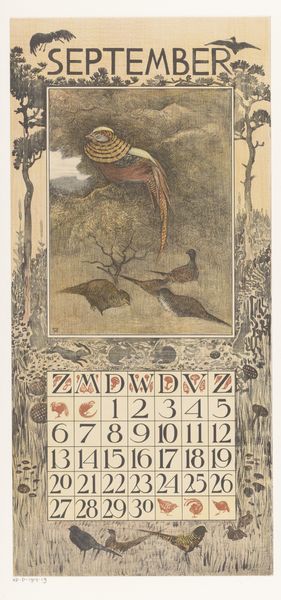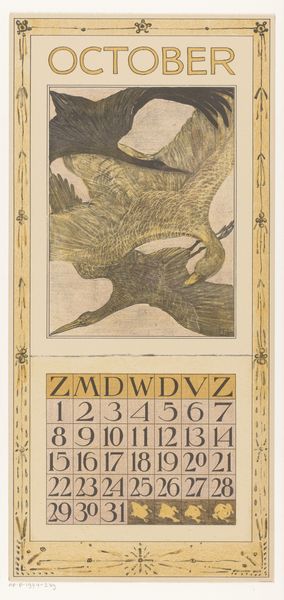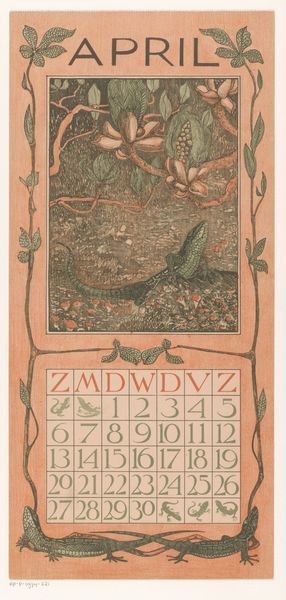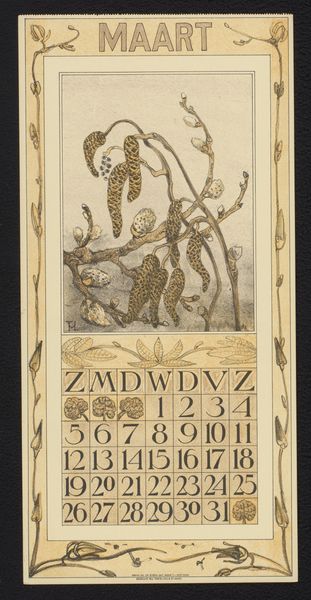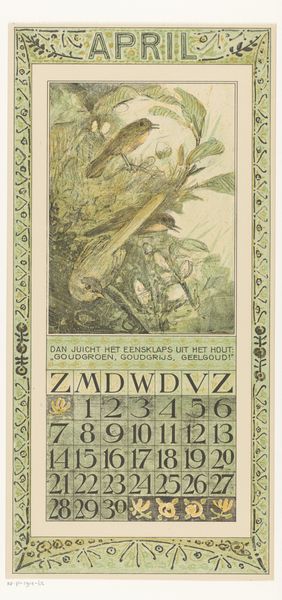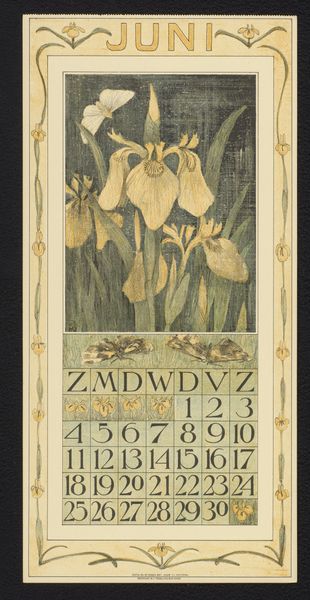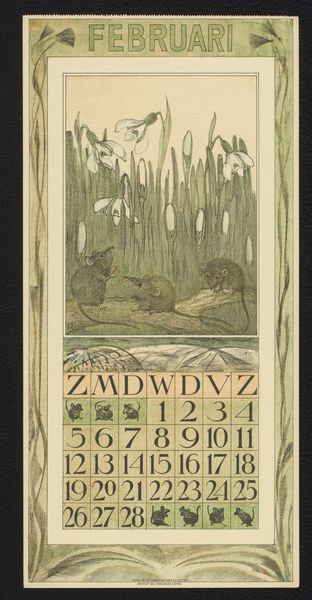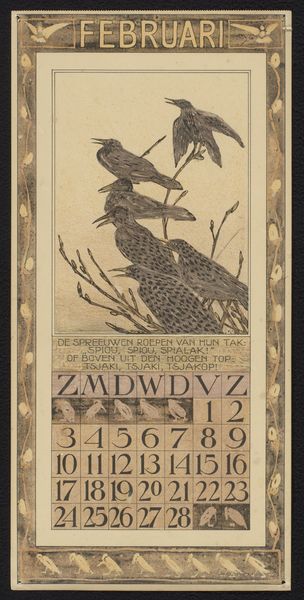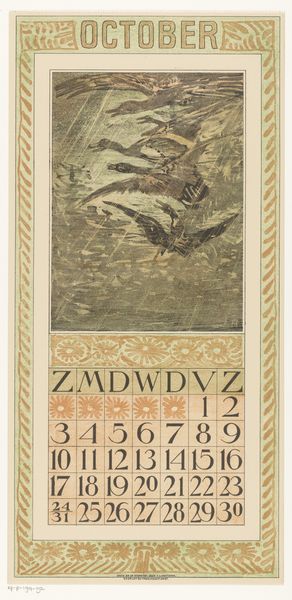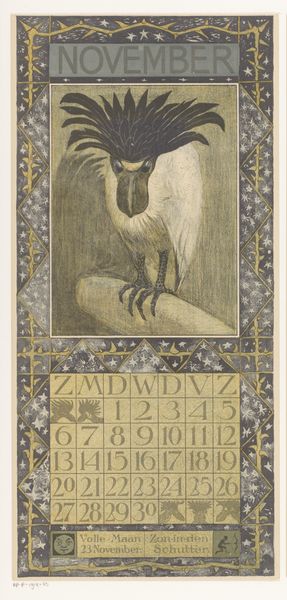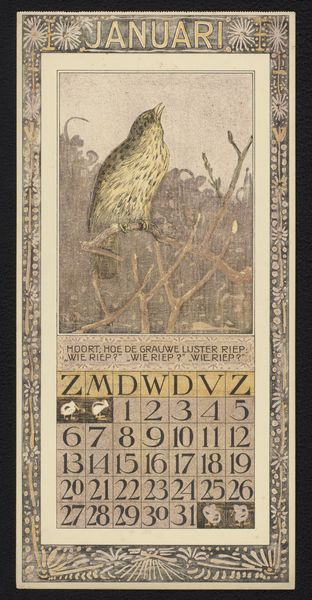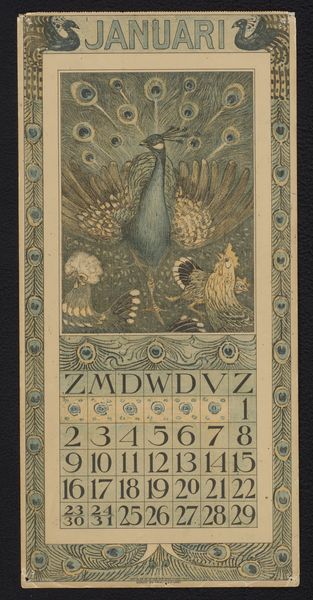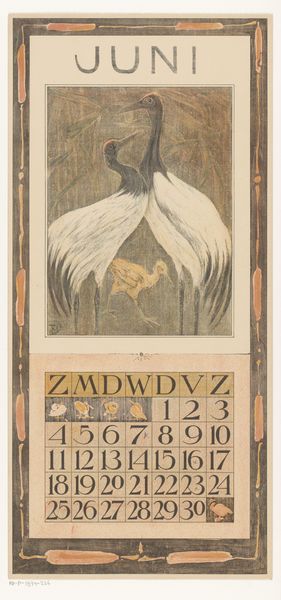
Kalenderblad voor oktober 1911 met salamanders en paddenstoelen 1910
0:00
0:00
theovanhoytema
Rijksmuseum
drawing, print, paper, ink, pen
#
drawing
#
art-nouveau
# print
#
landscape
#
paper
#
ink
#
symbolism
#
pen
Dimensions: height 439 mm, width 212 mm
Copyright: Rijks Museum: Open Domain
Curator: Oh, I find this delightful. "Kalenderblad voor oktober 1911 met salamanders en paddenstoelen" or, Calendar Sheet for October 1911 with salamanders and mushrooms by Theo van Hoytema. It’s from 1910, done in ink, pen, and print. Editor: My goodness, it's like stumbling upon a fairy ring. There's a strange, muted beauty to it. Sort of melancholic, even, for a calendar. The salamanders look pensive, don't they? As if they're pondering the fleeting nature of October. Curator: Van Hoytema’s calendar designs were incredibly popular. He really understood how to blend functionality with artistic expression and nature's elegance. This particular piece gives us a sense of his strong affinity with Art Nouveau and also symbolism. Note that frame constructed from stylised vegetation. It is not just decoration; it frames the seasonal experience. Editor: Absolutely! It’s a curated snippet of the natural world, neatly organized by days and dates. It's interesting how the composition, while somewhat structured, avoids being overly rigid. The mushrooms are almost playfully placed. This isn't just a calendar; it's a little ecosystem rendered on paper. Curator: His artistic style, rooted in careful observation, often features creatures that were not as visible at that period. In an urbanizing and industrializing country such as The Netherlands, Hoytema invites viewers to really observe what is usually beneath one's notice. The mundane details of the environment becomes worthy of art. Editor: Do you think the choice of salamanders carries some symbolic weight? Perhaps related to change or adaptation, since they’re amphibians, beings of both land and water? Curator: Possibly! Symbolism was quite important at that period. One needs to think how the rising popularity of ecological and biological sciences played a crucial role in his choices. These choices are not random and definitely reflect broader concerns, like scientific insights being available for everyone. Editor: Well, looking at it, I'm struck by how fresh it feels, even now. It has this timeless quality that transcends its practical purpose. Curator: Exactly. Art transcends functionality. This offers both an aesthetic appeal and also highlights an ongoing social concern: to celebrate and conserve what we already have in terms of landscape and nature.
Comments
No comments
Be the first to comment and join the conversation on the ultimate creative platform.
